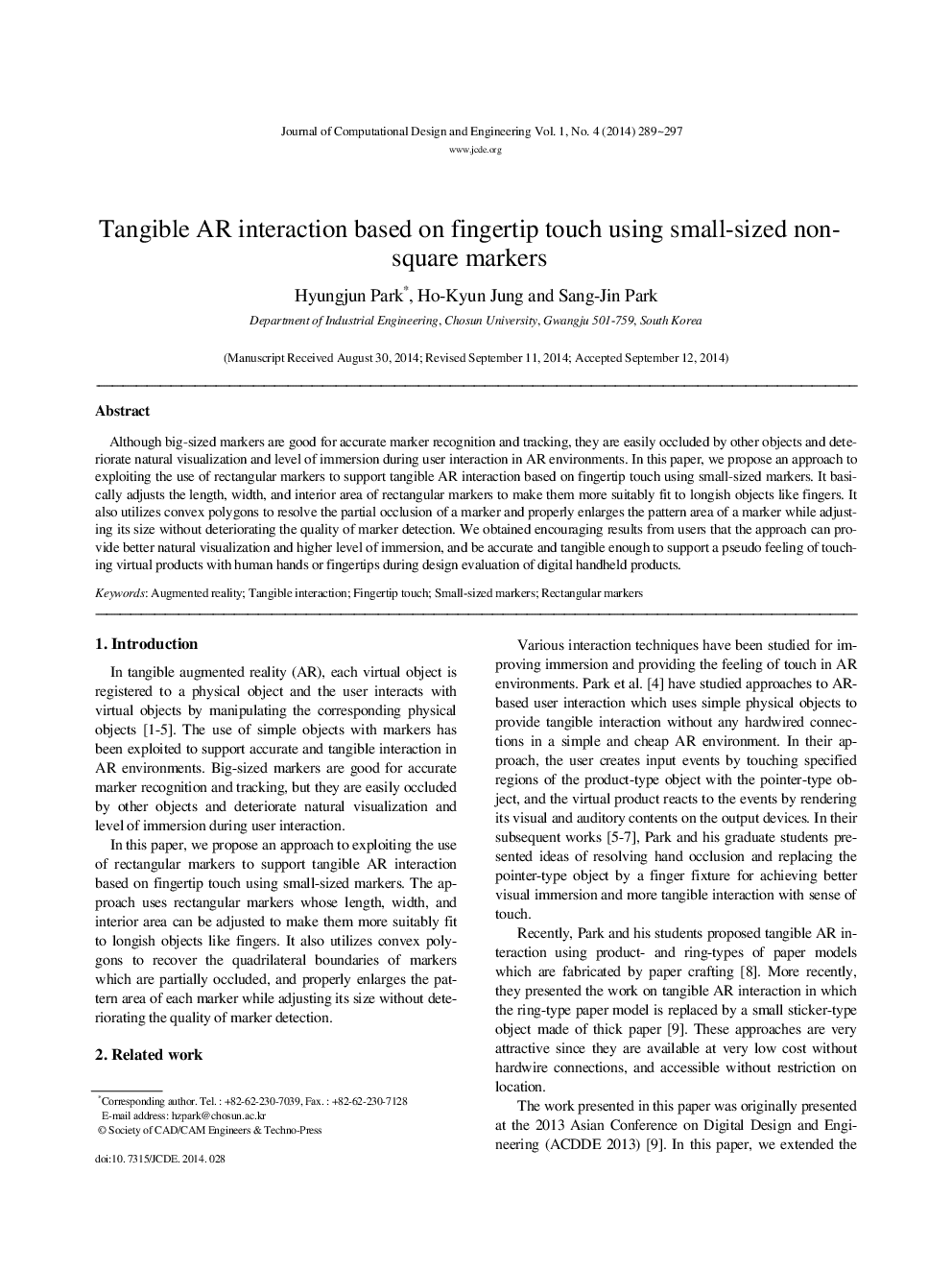| Article ID | Journal | Published Year | Pages | File Type |
|---|---|---|---|---|
| 442857 | Journal of Computational Design and Engineering | 2014 | 9 Pages |
Although big-sized markers are good for accurate marker recognition and tracking, they are easily occluded by other objects and deteriorate natural visualization and level of immersion during user interaction in AR environments. In this paper, we propose an approach to exploiting the use of rectangular markers to support tangible AR interaction based on fingertip touch using small-sized markers. It basically adjusts the length, width, and interior area of rectangular markers to make them more suitably fit to longish objects like fingers. It also utilizes convex polygons to resolve the partial occlusion of a marker and properly enlarges the pattern area of a marker while adjusting its size without deteriorating the quality of marker detection. We obtained encouraging results from users that the approach can provide better natural visualization and higher level of immersion, and be accurate and tangible enough to support a pseudo feeling of touching virtual products with human hands or fingertips during design evaluation of digital handheld products.
